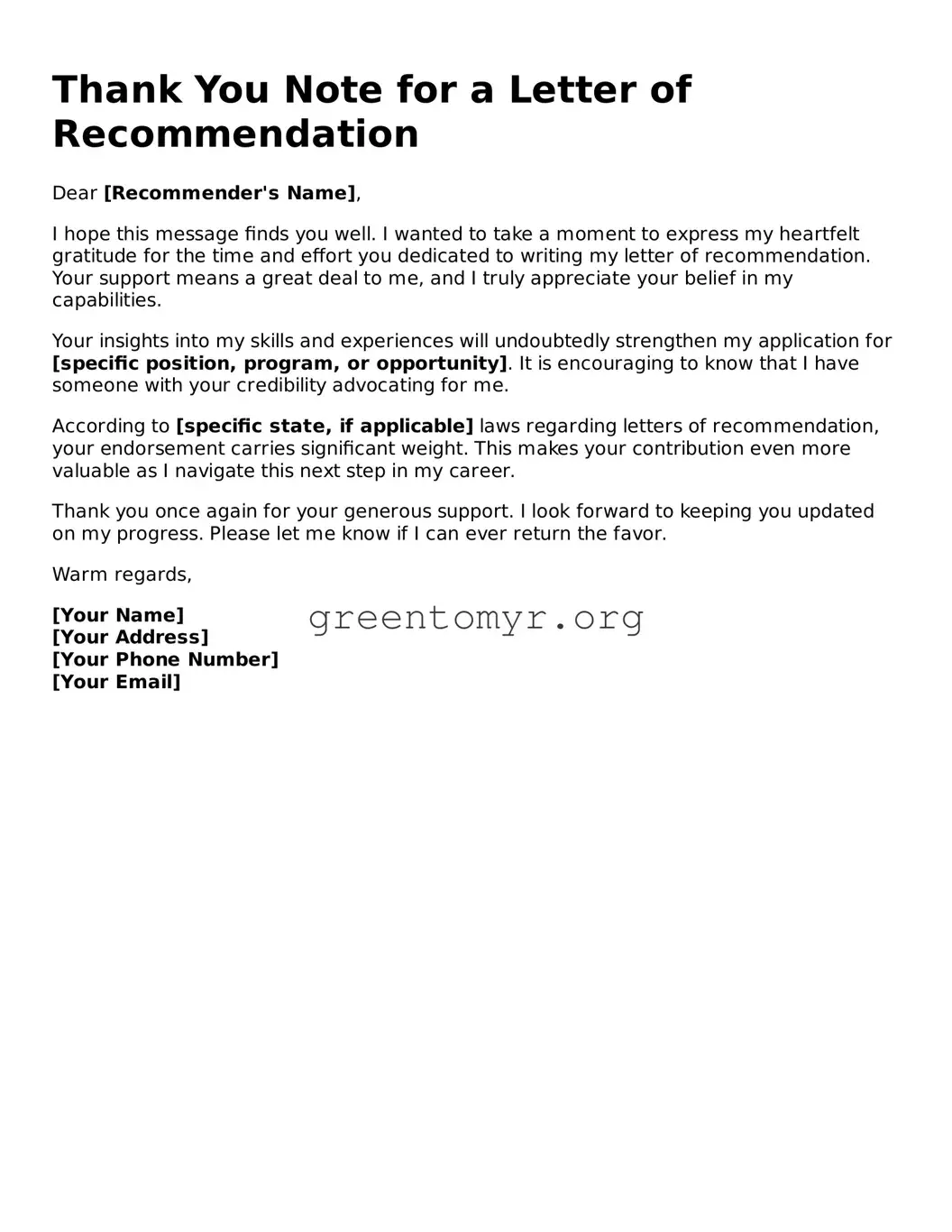Thank You Note for a Letter of Recommendation
Dear [Recommender's Name],
I hope this message finds you well. I wanted to take a moment to express my heartfelt gratitude for the time and effort you dedicated to writing my letter of recommendation. Your support means a great deal to me, and I truly appreciate your belief in my capabilities.
Your insights into my skills and experiences will undoubtedly strengthen my application for [specific position, program, or opportunity]. It is encouraging to know that I have someone with your credibility advocating for me.
According to [specific state, if applicable] laws regarding letters of recommendation, your endorsement carries significant weight. This makes your contribution even more valuable as I navigate this next step in my career.
Thank you once again for your generous support. I look forward to keeping you updated on my progress. Please let me know if I can ever return the favor.
Warm regards,
[Your Name]
[Your Address]
[Your Phone Number]
[Your Email]
